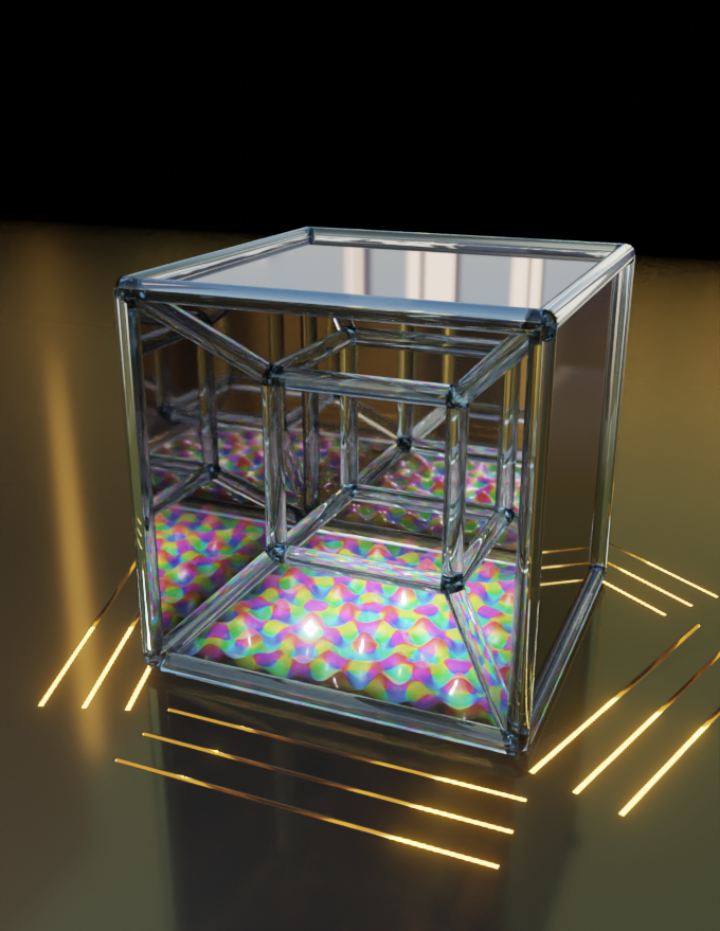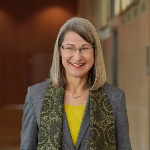Crystals are highly symmetrical, but quasicrystals lack translational symmetry. These solids puzzle physicists. A research collaboration between the Technion in Haifa, the University of Duisburg-Essen and the University of Stuttgart (4th Physics Institute) has now solved one of these problems. When investigating collective electron oscillations (plasmons) on gold surfaces, the scientists discovered a quasi-crystalline pattern. Inspired by earlier plasmon experiments, they searched for the missing symmetry - and found it in four-dimensional space. They have now published their findings in the renowned journal Science (DOI: 10.1126/science.adt2495).
New order in four-dimensional space
Tilers prefer regular patterns because symmetrical tile arrangements make their work easier and more efficient. Symmetrical means that the pattern coincides with itself when it is shifted by the edge length of a tile or a multiple thereof. However, some tile patterns lack this "translational symmetry," creating a fascinating blend of order and chaos. One example of this is the so-called Penrose tiling, which consists of two types of diamond-shaped tiles. There is a three-dimensional equivalent in nature: quasicrystals, which fill the space but have no translational symmetry. Physicists from Stuttgart, in collaboration with colleagues from the Technion in Haifa and the University of Duisburg-Essen, have now discovered a new type of topological order in a quasicrystal—one that exists in four-dimensional space. This shows that higher spatial dimensions play a real role in the physics of quasicrystals.
Skyrmions: Vortices that behave like particles
The story begins with Professor Harald Giessen's team, which studied surface plasmons—collective oscillations of electrons on a gold surface triggered by laser light. The physicists engraved nanometer-thin notches into the gold so that the plasmons overlap like water waves and create complex patterns. Using advanced microscopy techniques, in cooperation with the team in Duisburg, they captured these interference patterns, even tracking their temporal evolution on a sub-femtosecond scale—within quadrillionths of a second. The magnitude and direction of the electric fields - the “field vectors” - can be determined at every point on the surface. These form vortices, similar to the whorls in human hair.
What kind of order do these vortices exhibit? They have a “topological charge”. Topology explores similarities between shapes. For example, a cup with a handle and a car tire are topologically equivalent because both have a single hole and can be deformed into each other. In the experiment, the topological charge of the surface plasmons describes how many times the field vectors rotate around the vortex core when one completes a full loop around it. The topological charge remains constant, i.e. it is a stable symmetry property of the plasmons. The researchers demonstrated that these vortices adopt the topological order of "skyrmions"—a type of vortex that behaves like particles.
Five-fold symmetry
“I had the idea of arranging the nanometer-thin notches in a pentagonal shape,” says Giessen. This is unusual because this symmetry does not actually occur in nature - at least not in ordinary crystals. To the researchers' surprise, similar vortex patterns emerged as before. The new vortices showed a five-fold symmetry, which is a characteristic feature of quasicrystals. “We wondered whether we had found quasi-crystalline skyrmions,” says Giessen. But this was not confirmed. The vortices were unstable and showed no topological charge. Instead, the researchers exchanged ideas with colleagues around the world. Professor Guy Bartal and Shai Tsesses from the Technion in Haifa recognized the similarity between the Stuttgart plasmon pattern and the Penrose tiling. This is not symmetric in two dimensions. But the physicist Dov Levine showed in the 1980s that it is the projection of a symmetrical four-dimensional grid, similar to the two-dimensional shadow of a three-dimensional cube. The symmetry is therefore “hidden” in a higher dimension.

Possible application in quantum computing
One hypothesis is that quasicrystals are also projections of higher-dimensional lattices into two-dimensional space, i.e. they also exhibit a hidden symmetry. This inspired Giessen's research team to shift their search for topological charge from two-dimensional to four-dimensional space. And they found what they were looking for. A four-dimensional equivalent to the topological charge, so-called topological charge vectors. The physicists thus discovered that quasicrystals actually have symmetrical properties that are linked to higher spatial dimensions. "This is a fascinating result for fundamental research," says Giessen. One can only speculate about applications. But topological material properties are stable and could help in quantum computing, which struggles with unstable qubits. The fact that these properties are “hidden” in higher, invisible dimensions could be relevant for secure information storage or communication.
Funding and authors
The research was supported by the European Research Council (ERC), the German Research Foundation (DFG), the German Federal Ministry of Education and Research (BMBF), the Baden-Württemberg Foundation [de], the Carl Zeiss Foundation, and several institutions at the Technion, including the Russell Berrie Nanotechnology Institute (RBNI), the Helen Diller Quantum Center (HDQC), and the Sarah and Moshe Zisapel Nanoelectronics Center (MNFU). In addition to Professor Guy Bartal and Shai Tsesses from the Technion in Haifa, the publication's co-authors include Professor Harald Giessen, Head of the 4th Physics Institute at the University of Stuttgart; Professor Frank Meyer zu Heringdorf, Head of the Interdisciplinary Center for Analytics on the Nanoscale (ICAN) of the University of Duisburg-Essen; and Professor Tim Davis, Mercator Fellow of the DFG Research Training Group GRK2642 at the University of Melbourne.
Christian J. Meier
Our "Publications compact" series presents further news about research findings from Stuttgart publications in a clear, concise, and accessible way for everyone.
Expert Contact:
Prof. Harald Giessen, University of Stuttgart, 4th Physics Institute, phone: +49 711 685-65111, email
Tsesses, P. Dreher, D. Janoschka, A. Neuhaus, K. Cohen, T. Meiler, T. Bucher, S. Sapir, B. Frank, T. Davis, F. Meyer zu Heringdorf, H. Giessen, and G. Bartal: Four-dimensional conserved topological charge vectors in plasmonic quasicrystals Science (2025). DOI: 10.1126/science.adt2495
Contact

Jutta Witte
Dr.Scientific Consultant



